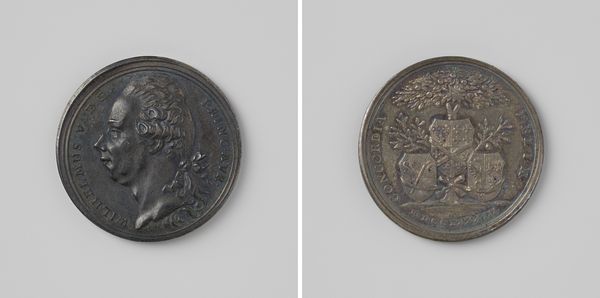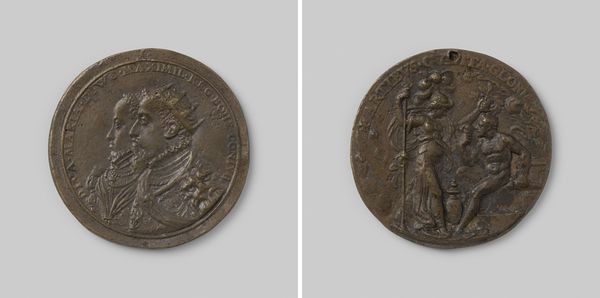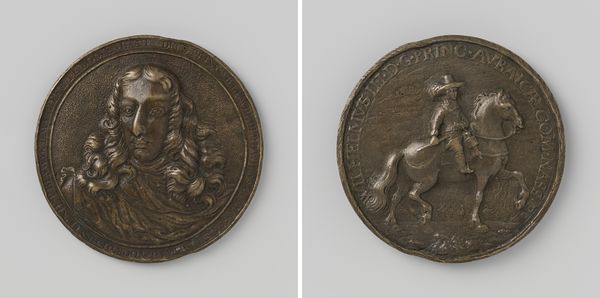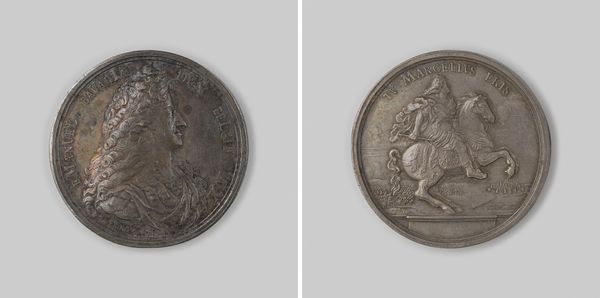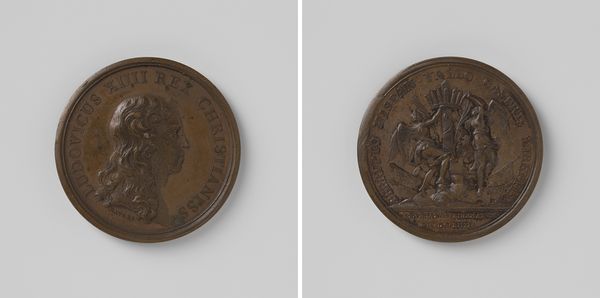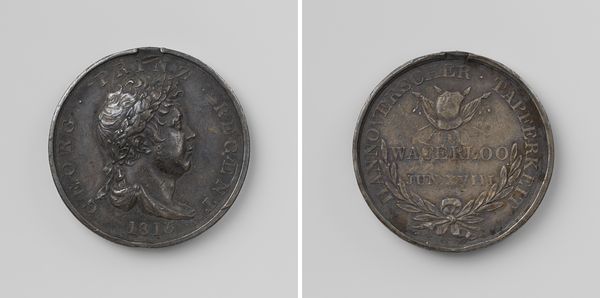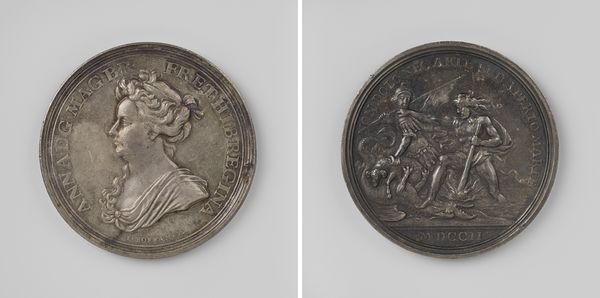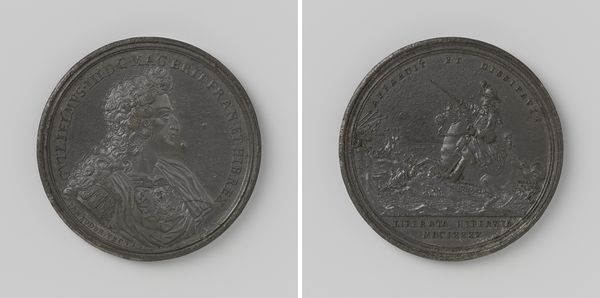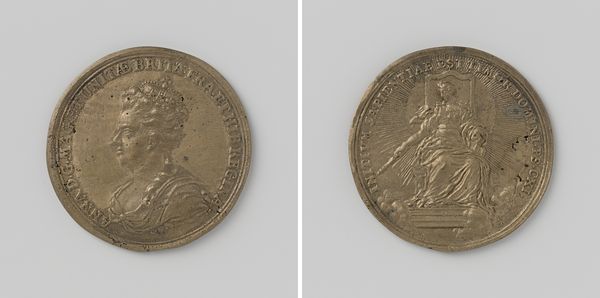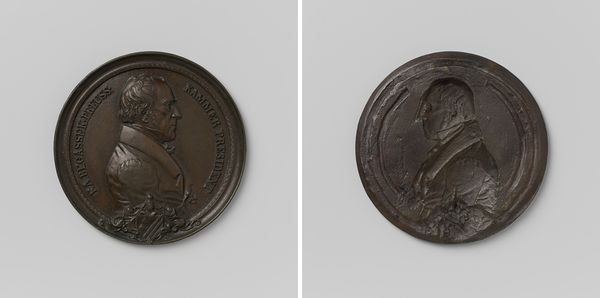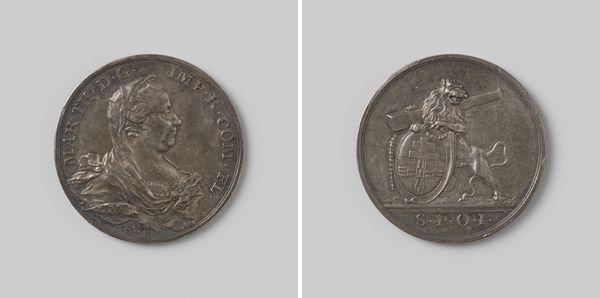
bronze, sculpture
#
portrait
#
sculpture
#
bronze
#
11_renaissance
#
sculpture
#
ceramic
#
history-painting
Dimensions: diameter 3.7 cm, weight 266 gr
Copyright: Rijks Museum: Open Domain
Editor: This striking bronze medal, titled "Alva," dates back to 1569. It’s unsigned. The two sides depict, respectively, a profile portrait and a hunting scene. What really strikes me is the… well, the *thingness* of it. The material presence. What catches your eye in this work? Curator: The tactility is certainly compelling. Consider bronze, a material so deeply interwoven with human history. From tools to weapons to commemorative objects like this, its creation demands a complex process, reflecting the labor and skill invested in its making. The fact that its creator chose bronze to depict the Duke of Alva—a controversial figure known for his brutal suppression of the Dutch revolt—adds another layer of materiality, doesn’t it? How does that relationship affect the symbolism of the object? Editor: That’s fascinating! I hadn't considered the bronze itself as carrying meaning. Is the contrast intentional—bronze being strong, enduring, and the Duke known for brutality and the scene showing people on a hunt, almost at war with animals. Maybe the creator felt a sense of moral ambiguity? Curator: Precisely! It makes us question the social context and perhaps challenge our perceptions of “high art.” How is the creation and exchange of art—even commemorative medals—influenced by, and influencing, economic systems and the labor of workers? Is this celebration of elite privilege obscuring a story about production or consumption? Editor: That's a lot to consider with something so small! Thinking about production, labor, and the consumption involved is a powerful shift. Thank you! Curator: Indeed. By focusing on the materials and social context, we gain a far richer understanding of Alva's meaning.
Comments
No comments
Be the first to comment and join the conversation on the ultimate creative platform.
